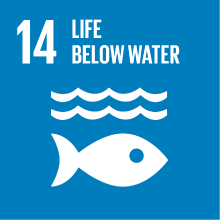GERMAN LANGUAGE 1
- Academic year
- 2020/2021 Syllabus of previous years
- Official course title
- LINGUA TEDESCA 1
- Course code
- LT0052 (AF:335969 AR:176582)
- Modality
- On campus classes
- ECTS credits
- 12
- Subdivision
- Class 2
- Degree level
- Bachelor's Degree Programme
- Educational sector code
- L-LIN/14
- Period
- 2nd Semester
- Course year
- 1
- Moodle
- Go to Moodle page
Contribution of the course to the overall degree programme goals
Expected learning outcomes
Knowledge and understanding of the phonetic, phonological, morphological and syntactic properties of the German language. Knowledge and understanding of the German lexicon, morphosyntax and textual organization at B1+/B2 level.
2) Applying knowledge and understanding.
Capability of carrying out metalinguistic reflections at the phonetic, phonological, morphological and syntactic levels between German and Italian. Capability of using the correct terminology of linguistics. Capability of understanding short narrative texts in German. Capability of producing (at B1+level) and of understanding (at B2 level) written and oral texts in German.
3) Making judgments.
Capability of understanding German texts. Capability of recognizing the correct phonetic and phonological realizations of the German language. Capability of recognizing the correct morphological and syntactic German structures.
4) Communication skills.
Receptive abilities at B2 level: capability of following a university lesson on a linguistic topic. Capability of understanding simple journal articles and short narrative texts. Productive abilities at B1+ level: capability of writing simple texts (familiar topics), short stories, summarise the plot of a film or a book. Interactive abilities: participating at conversations on familiar topics, hobbies, everyday life. Capability of actively taking part at all the class activities.
5) Learning skills.
Capability of following a university lesson (making notes, using the Moodle/E-Learning platform). Capability of properly using the monolingual and bilingual dictionaries. Capability of using the linguistic resources for learning German as a foreign language available on line.
Pre-requirements
Contents
the part of the course taught by language experts (lettorato) is dedicated to developing written and oral competence in the German language at B1+/B2 level, both in production and comprehension.
Course part taught by Dr. Federica Cognola:
it is dedicated to the development of the student's metalinguistic competence of German comprising the phonetics, phonology, morphology and the syntactic structure of the
language.
Referral texts
ASPEKTE NEU. MITTELSTUFE DEUTSCH. LEHRBUCH B1 PLUS. Di Ute Koithan, Helen Schmitz et. al. Berlin: Langenscheidt 2014, 191 pagg. (ISBN 978-3-12-605016-6).
ASPEKTE NEU. MITTELSTUFE DEUTSCH. ARBEITSBUCH B1 PLUS MIT AUDIO-CD. Di Ute Koithan, Helen Schmitz et. al. Berlin: Langenscheidt 2014, 184 pagg. (ISBN 978-3-12-605017-3).
*** for the module taught by Dr. Federica Cognola:
Slides and materials shared in the course's page on Moodles/E-Learning;
Reference books (on which Dr Cognola bases her lessons and which are NOT obligatory for the exam):
Alber, Birgit (2007), Einführung in die Phonologie des Deutschen. Verona: QuiEdit (pp: 21-66; 105-134)
Alber, Birgit (2015), Einführung in die Morphologie des Deutschen. Verona: QuiEdit (pp 17-84)
Meibauer, Jörg, et al (2015 o edizioni precedenti), Einführung in die Germanistische Linguistik. Capitolo 4, Metzler Verlag.
Gaeta, Livio (2017), Lineamenti di Grammatica Tedesca. Roma: Carocci. (Cap 2-3-4)
Woellstein Angelika (2104): Topologisches Satzmodell. Heidelberg: Winter (pp 1-32)
Assessment methods
The exam consists of 4 parts, where 2 parts make up a package:
Package 1: metalinguistic knowledge and its applications:
Part 1: For the Linguistic module (Dr Cognola), the examination shall be written, and comprise 3 exercises (transcription of some German words with IPA: 6 points; full morphological analysis of two German words: 6 points; syntactic analysis of 2 German sentences: 6 points) and 2 theoretical questions (6 points each) distributed appropriately across the main subjects of the syllabus. The exam lasts 45 minutes and the note of the linguistic modules counts 40% for the exam's final note.
The following evaluation criteria play a role in determining the final grade:
a) correctness of the answers/exercises according to the main subjects of the syllabus; b) completeness of the answers and in the exercises subparts according to the main subjects of the syllabus; c) ability to present and discuss the main subjects of the syllabus in a clear and logical manner; d) ability to properly use the scientific language of linguistics.
The Linguistic exam is passed with a grade of 18/30.
The highest score (30/30 e lode) can be get by excellent exams in which students demonstrate to have acquired excellent knowledge of all the course's topics, to be able to present and discuss them in a clear and logical manner (also from a contrastive Italian-German perspective), with the correct use of the scientific language of linguistics.
Part 2: grammar test (completion test) which takes 60 minutes;
Package 2: written competence (both receptive and productive):
Part 3: listening comprehension (30 minutes)
Part 4: written expression (writing a short text following a dedicated input stimulus) (90 minutes)
Type of exam
Teaching methods
The German-as-a-foreing-language lessons will combine different didactic methods aiming at helping student acquire and practice the linguistic competences within the CEFR B1/B2 levels: practical lessons in labs and classrooms, group work.
Further information
This course is dedicated to students attending:
Curriculum POLITICO INTERNAZIONALE
The course will be given online. The course's materials and lessons will be available here: https://moodle.unive.it/course/view.php?id=6305
2030 Agenda for Sustainable Development Goals
This subject deals with topics related to the macro-area "Natural capital and environmental quality" and contributes to the achievement of one or more goals of U. N. Agenda for Sustainable Development



